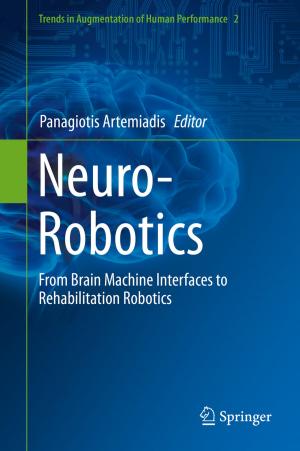Advances in X-Ray Contrast
Collected Papers
Nonfiction, Health & Well Being, Medical, Medical Science, Diagnostic Imaging, Allied Health Services, Radiological & Ultrasound| Author: | ISBN: | 9789401139595 | |
| Publisher: | Springer Netherlands | Publication: | June 29, 2013 |
| Imprint: | Springer | Language: | English |
| Author: | |
| ISBN: | 9789401139595 |
| Publisher: | Springer Netherlands |
| Publication: | June 29, 2013 |
| Imprint: | Springer |
| Language: | English |
For all that new non-X-ray technologies such as MR and ultrasound and its various manifestations have made an enormous impact in recent years on the practice of medical imaging, the use of X-rays and X-ray contrast-enhancing agents has retained an important position at the heart of the process. Indeed, with its frequent requirements for high total dose regimes, CT has increased the use of contrast agents. Even helical/spiral CT which, it was initially argued, should reduce contrast as well as radiation loads, may actually require just as much or more of both because of the potential it offers for multi-phase scanning.
Iodinated intravascular X-ray contrast agents, especially the more recently developed non-ionic agents, continue therefore to play a pivotal role in clinical imaging.
These succinct and authoritative articles, originally appearing in the journal Advances in X-ray Contrast, range sufficiently widely for their compilation in this volume to be considered a mini-textbook on the water-soluble iodinated X-ray contrast agents and their applications. Each is written by an acknowledged and experienced expert in the field. They usefully cover the developmental history of the agents; defined risk factors, approaches to prophylaxis and, ultimately, of the treatment of adverse reactions; the interesting subject of supposed delayed reactions to contrast agents; the important organ-specific toxicities, cardiac toxicity, neurotoxicity and nephrotoxicity and high-dose toxicity as encountered in complex procedures; the sometimes special circumstances and occasional extreme conditions to which contrast agents may be exposed in Interventional Radiology; the special, in several ways, case of paediatric radiology; the controversial subject of thromboembolic phenomena in clinical angiography; and the precise role of contrast agents. As regards the practicalities of contrast administration regimes and imaging protocols it is really only in the area of CT that there is debate and controversy, and articles are included which cover CT of the liver, spleen and pancreas, and protocols for the new spiral/helical technology and even for the much less widely available electron-beam CT technology visualization. Pulmonary embolus diagnosis and protocols for contrast administration with this technology are also discussed.
For all that new non-X-ray technologies such as MR and ultrasound and its various manifestations have made an enormous impact in recent years on the practice of medical imaging, the use of X-rays and X-ray contrast-enhancing agents has retained an important position at the heart of the process. Indeed, with its frequent requirements for high total dose regimes, CT has increased the use of contrast agents. Even helical/spiral CT which, it was initially argued, should reduce contrast as well as radiation loads, may actually require just as much or more of both because of the potential it offers for multi-phase scanning.
Iodinated intravascular X-ray contrast agents, especially the more recently developed non-ionic agents, continue therefore to play a pivotal role in clinical imaging.
These succinct and authoritative articles, originally appearing in the journal Advances in X-ray Contrast, range sufficiently widely for their compilation in this volume to be considered a mini-textbook on the water-soluble iodinated X-ray contrast agents and their applications. Each is written by an acknowledged and experienced expert in the field. They usefully cover the developmental history of the agents; defined risk factors, approaches to prophylaxis and, ultimately, of the treatment of adverse reactions; the interesting subject of supposed delayed reactions to contrast agents; the important organ-specific toxicities, cardiac toxicity, neurotoxicity and nephrotoxicity and high-dose toxicity as encountered in complex procedures; the sometimes special circumstances and occasional extreme conditions to which contrast agents may be exposed in Interventional Radiology; the special, in several ways, case of paediatric radiology; the controversial subject of thromboembolic phenomena in clinical angiography; and the precise role of contrast agents. As regards the practicalities of contrast administration regimes and imaging protocols it is really only in the area of CT that there is debate and controversy, and articles are included which cover CT of the liver, spleen and pancreas, and protocols for the new spiral/helical technology and even for the much less widely available electron-beam CT technology visualization. Pulmonary embolus diagnosis and protocols for contrast administration with this technology are also discussed.















